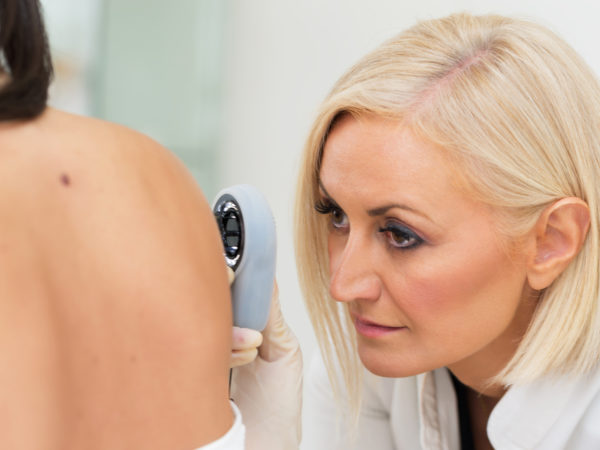Unusual Red Spots On Your Skin?
As I age, I notice little red spots on my trunk, sometimes on my breasts, stomach and hips. They resemble little moles filled with blood.
Andrew Weil, M.D. | June 7, 2024

From your description, these are angiomas, sometimes called cherry angiomas or senile angiomas, even though they often begin to appear in people in their 30s. (They are also known as Campbell de Morgan spots after the surgeon who first described them in 1872.) These bright red (occasionally purple) spots are harmless growths made up of small blood vessels that reach the surface of the skin. Cherry angiomas are very common, present in more than 75 percent of people over the age of 75, and they typically run in families.
Cherry angiomas usually are round or oval, smooth, and about the size of a pinhead. They frequently appear on the trunk, sometimes also on the neck, face, arms and legs and – rarely – on the scalp. Although most are very small, they can grow as large as 1/4 inch across and assume a mushroom-like look.
We don’t know what causes cherry angiomas. Studies have variously reported that they are related to pregnancy and tend be larger than usual in diabetic patients and in tropical climates. Some appear to be associated with exposure to certain chemicals, including bromides and mustard gas, and some have been linked to liver transplants. But for the most part, the main contributory factor appears to be age Angiomas tend to increase in both size and number with advancing years.
Because cherry angiomas are not a threat to health, there is no reason to remove them unless you don’t like their appearance or if they bleed when irritated. A dermatologist can zap them away with an electric needle or a laser. They also can be frozen off with liquid nitrogen (cryosurgery) or shaved off with a scalpel. Removing these growths usually doesn’t leave a scar.
Be aware that cosmetic procedures aren’t covered by insurance; if you want your angiomas removed, you’ll have to pay out of pocket. Don’t try to remove them yourself: you may not be able to stop the bleeding and that may require more expensive care. And a do-it-yourself procedure could leave you with a scar.
Do see a dermatologist if you notice a change in any growth, including an angioma.
Andrew Weil, M.D.
Source
Jae-Hong Kim et al, “Cherry Angiomas on the Scalp”. Case Reports in Dermatology, November 11, 2009, doi: 10.1159/000251395
Originally Posted November 2017. Updated June 2024.











